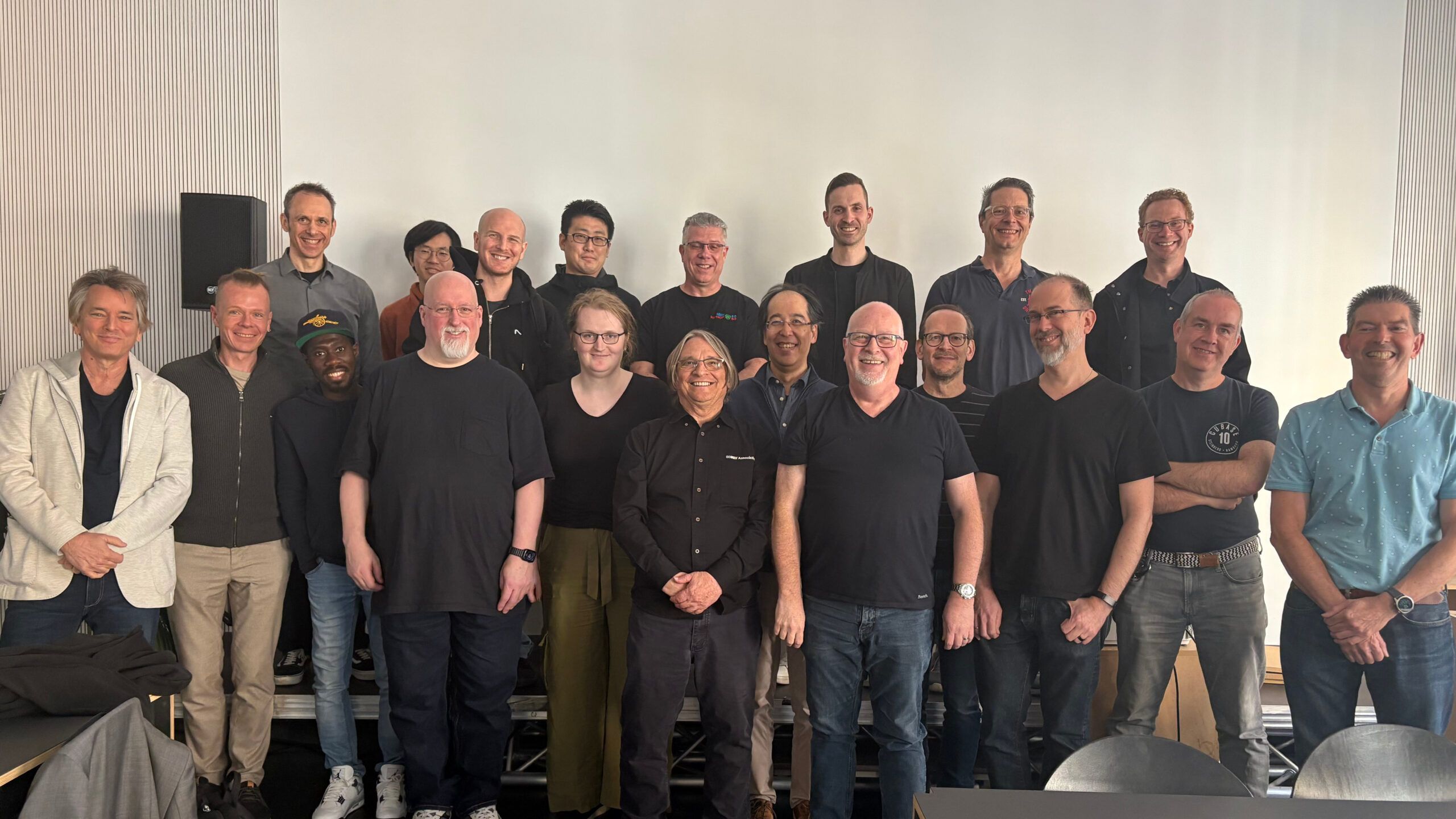DAW Working Group Meets Face To Face In Berlin

When we started working on MIDI 2.0 we knew it would be a long process to rebuild the entire infrastructure that had been built up for MIDI 1.0.
The path to MIDI 2.0
We needed to take the following steps to move MIDI 2.0 forward.
- First, we needed a spec on paper which was finished in 2020. But we still had no way to test the ideas in the spec because there was no way to transport MIDI 1.0 and MIDI 2.0 in Universal MIDI Packets (UMP).
- We then worked with the USB IF (the group that controls to the USB sepcification and in June of 2020 finished the work on the MIDI 2.0 USB specification. There are now two MIDI 2.0 capable transports – USB and the Ethernet Network transport we finished in November of 2024.
- After we had a transport, the work started on getting MIDI 2.0 into the operatinf systems. Apple, Linux and Google have all implemented MIDI 2.0 and Windows is in Developer Preview 8 so will soon be publicly available probably by this summer. Many companies are waiting for the Windows release because they have customers on Mac and Windows.
- The next step was support in hardware devices. There are MIDI 2.0 products available from Native Instruments, Roland, Studio Logic, Waldorf and Yamaha. After we had these parts in place we were abel to test and protoype MIDI 2.0 and did some major revisions to the spec in 2023.
- We also need support in DAWs and in 2024 we saw MIDI 2.0 support for Logic, Cubase and MultitrackStudio implemented (though in many cases this is a preference setting that you need to turn on).
- One of the last steps in this process is determining how DAW plugins will support MIDI 2.0.
The DAW Working Group
The MIDI Association hosted the first meeting of the DAW working group before Super Booth 2024 at the Native Instruments office in Berlin, where the companies agreed to work together to develop open-source software available under a permissive MIT license to bridge the gap between external MIDI Devices, Digital Audio Workstations (DAWs), and plugins.
We have been meeting every week and continuing our progress.
How to display MIDI 2.0 values
One of the outcomes from the DAW working group is in the article recently posted on MIDI.org about how to display MIDI 2.0 values. This is a great example of how the MIDI Association brings together companies that compete with each other in the market to agree on key concepts so that people who use MIDI won’t be confused by different representations of MIDI 2.0 values.
May 6 and 7 meetings at the Ableton offices in Berlin
This year on May 6 and 7 before Super Booth 2025, we held a very productive two day meeting at the Ableton offices in Berlin. All the plugin format companies (Logic for AU, Avid for AAX, Bitwig for CLAP and Steinberg for VST3) met along with about 20 other MIDI Association and AMEI members to continue the work on the MIDI-CI helper described in this article.

We also are working on a replacement for Mackie and Logic Control that will include a Transport and Location Profile and a new idea discussed at this 2025 face to face meeting for a Dynamic Focus Control Profile -a standardized way to implement some common features in DAWs like Logic’s Smart Controls and Cubase’s Quick Controls. Essentially the idea is to have a group of MIDI 2.0 registered controllers that are dedicated to controlling whatever is in focus in the DAW. The same concept could also be used for plugins in standalone mode and workstation keyboards that often have 8 control knobs that do different things depending on the mode that they are in.
We understand that people are impatient and waiting for the promise of MIDI 2.0 to become a reality. But we also know that we have to carefully plan each step to develop the correct architecture and always ensure the most backward compatibility with MIDI 1.0.
We will soon create an article about MIDI events at Super Booth 2025, but we spoke with hundreds of people at the show and they are all excited (as we are) about what the future holds for the world of MIDI.